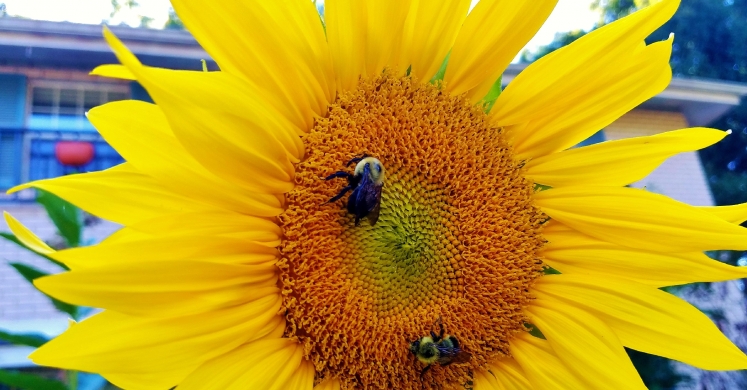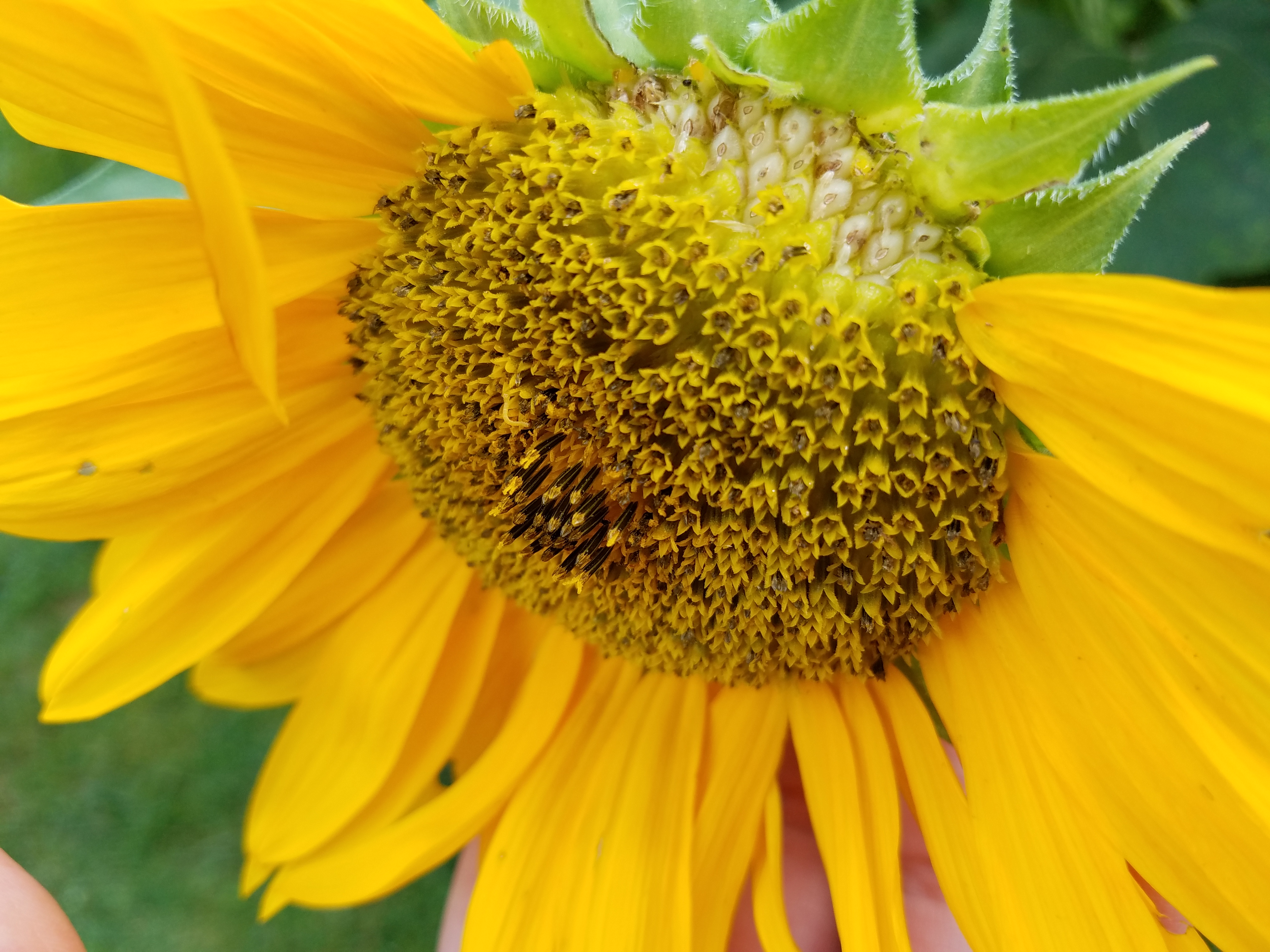Blog

#bioPGH Blog: Sunflowers
 A resource of Biophilia: Pittsburgh, #bioPGH is a weekly blog and social media series that aims to encourage both children and adults to reconnect with nature and enjoy what each of our distinctive seasons has to offer.
A resource of Biophilia: Pittsburgh, #bioPGH is a weekly blog and social media series that aims to encourage both children and adults to reconnect with nature and enjoy what each of our distinctive seasons has to offer.
Sunflowers are a quintessential bloom of summer time. With their tall nodding heads and bright, sunny faces, it’s easy to see why they are a staple of greeting cards, home décor, and gardening. There are at least 67 species of sunflowers in the genus Helianthus, including our common cultivated sunflower Helianthus annuus, and though the flower is bright and summery, like everything in nature there is more to this flower than meets the eye. Let’s explore!
Sunflowers are a member of the plant family Asteraceae, which we talked about here last summer. Like other flowers in this family, each sunflower is actually a composite flower—hundreds of tiny anatomically complete flowers making up one large flower head. What appear to be petals are actually ray florets, specialized tiny flowers, and the round “face” of the flowers is made up of hundreds of tiny disk florets. When pollinators visit these flowers, they are actually visiting the individual florets on the sunflowers. Intriguingly, to help avoid self-pollination, sunflowers (and many other composite flowers) are protandrous, meaning the male parts of each floret develop first. A day or two later, the female parts of the flower develop and can be pollinated with pollen from a different sunflower.

Close up to a sunflower, you can see the tiny disk florets quite clearly.
Since each sunflower is made of hundreds of flowers, it makes sense that each sunflower can produce hundreds of fruits. Fruits are a part of a plant that protects and helps disperse the seeds. (Think about apples, tomatoes, pumpkins, cucumbers—all fruit with seeds inside.) Have you ever opened a bag sunflower seeds that are still in their hulls? Each one of those seed-containing hulls is an individual fruit, and each one of the disk florets from the “face” of the flower will develop into one of the fruits if it is pollinated.
.jpg)
Another interesting characteristic of sunflowers is their early heliotropism, their ability to follow the sun throughout the day as young flowers. In the morning, sunflowers face east and the flower head turns with the sun as it moves across the sky during the day, ending the evening by facing west. By morning, though, the flower heads have shifted to face the east once again, in time to greet the sunrise. Once the flower heads have reached full size they tend to face only east. The reasoning behind this ability to “follow the sun” is actually uneven stem growth. As the plant is growing, one side of the stem will grow faster than the other, which makes the head of the flower “follow” the sun. At night, the other side of the stem catches up, resetting the flower to face east. As adults, the flowers face east as a way to absorb heat, which helps them attract pollinators. The journal Science produced the handy video below to help illustrate this. (The video discusses the role of circadian rhythms in the uneven plant growth. If you need a refresher, check out our conversation from this past fall!)
So the next time you spot a sunny gathering of sunflowers, enjoy the beauty, and remember how much complexity there is even in what appears to be a single flower!
Connecting to the Outdoors Tip: If sunflowers didn’t make it into your home garden this year, be sure to check out the lovely bunch in the Edible Garden here at Phipps!
Continue the Conservation: Share your nature discoveries with our community by posting to Twitter and Instagram with hashtag #bioPGH, and R.S.V.P. to attend our next Biophilia: Pittsburgh meeting.
Resources
Sunflower Production—North Dakota State University Extension Service
Photo credits: Header, public domain; cover, Maria Wheeler-Dubas; sunflowers seeds, public domain; sunflower detail, Maria Wheeler-Dubas

